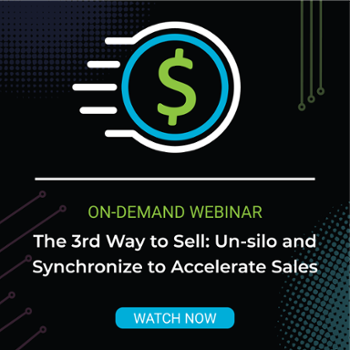12 Days of Gifts to Give Yourself that will Improve Your Content Marketing in 2019
Attempting to tackle your entire content marketing to-do list in one day could be overwhelming. Actually, it would be VERY overwhelming. But if you...


A lot of business leaders say their organization is executing an inbound marketing strategy, but many still aren’t exactly sure what inbound marketing is or why it’s important. I’ll save you a Google search. Here’s how LeadG2 defines it.
Inbound marketing is a methodology used to attract the attention of prospects using content creation. But not just any kind of content. You need content that’s relevant and meaningful to your prospects. And your content should position your business, your executives and your sales team as thought leaders, subject matter experts, and trusted advisors. By creating and publishing this type of content on your website you’re able to draw the attention of your prospects – so in effect, they are “raising their hands” and letting you know they have a problem and are interested in your expertise.
That may help you grasp the general concept but what else should you understand about Inbound Marketing?
 Blogging is to inbound marketing as a hammer is to carpentry.
Blogging is to inbound marketing as a hammer is to carpentry.
Blogging is just one of many tools Inbound Marketers can use to attract an audience and convert visitors to leads, but it’s certainly not the only one. Other Marketing Tools include (but aren’t limited to):
eBooks
Whitepapers
Webinars
Case studies
Videos
Marketing automation software (like HubSpot)
SEO/keywords
Social media
Blogging is just one tactic that’s a part of a comprehensive inbound marketing strategy.
In order for your content to attract qualified prospects, it first must be interesting to them.
Write about topics that your prospects want to learn about.
Educate them.
Inform them.
Answer their commonly asked questions.
Before you hit the “enter” button to publish a piece of content on your site, first put it through the “so what” filter. Will your prospect read it and say, “So what!” or “Who cares!”? Your content strategy should follow the same rules you use at cocktail parties – only talk about yourself 20% of the time. The remaining 80% of the conversation should be focused on what’s important to everyone else. This means you may need to scale back on articles about your latest community service project, industry award, or new product announcement.
Do you know who is the intended audience of your published content? Who do you want it to attract? Who are they? What’s important to them? Do some research and define their characteristics and priorities. This is your target persona. Defining your Target Persona will help you guide your topics and define your voice.
What happens when your prospect visits your website? What do they do next?
Do they read a page or two and then bounce? Do you know they were even there? Inbound marketing includes leveraging marketing automation tools like HubSpot to build mechanisms into your existing website infrastructure so you can identify your visitors, convert them to leads, and begin digitally engaging with them.
Marketing automation technology from HubSpot will help you build calls-to-action for appropriate offers, landing pages, and smart lead capture forms.
Many salespeople struggle engaging target prospects and securing that first appointment. They leave a voice mail message and then send a follow-up email, but are often unsure about what to do next. Persistent salespeople will continue to leave voice mail messages and send variations of the same email. However, this can become tiresome – for both the prospect and the salesperson.
Resourceful salespeople remain persistent, but “add arrows to their quiver” by leveraging the content that was originally designed and published as a part of their inbound marketing strategy. They build a “don’t-give-up” messaging strategy around the blog articles, eBooks, whitepapers, etc. and include links to these resources in their one-to-one communications.
The content helps position the salesperson as a thought leader and subject matter expert. This helps them rise above the noise in the market” by being less “salesy”. Instead, their focus is on educating and informing their prospect. Taking this approach gives the prospect a reason to engage and makes them more likely to agree to a first meeting.
It’s nearly impossible for an inbound marketing strategy to be executed by just one marketing resource on your team.
A comprehensive inbound marketing strategy just has too many moving parts – content research, writing, editing, design, campaign planning, project management, social media promotion, email marketing campaigns, CTA and landing page design, lead capture forms, lead scoring models, lead nurture workflows, lead hand-off workflows, A/B testing, SEO/keywords, data analytics, etc.
In addition, if one of the goals of inbound marketing is to brand the executives and salespeople as thought leaders/subject matter experts, then they need to participate in both the creation of the content (especially blogging) and promotion of the content (sharing it with their networks and leveraging it in their one-to-one communications with their prospects.
The infrastructure required to execute an Inbound marketing strategy also provides the framework for lead attribution reporting, sales pipeline management, and “closing the loop” on your marketing spend. This framework will help you move beyond viewing your marketing as only a branding exercise. Instead, the focus will be on the size of your sales pipeline, shortening the time span between deal origination to close, and tracking new top-line revenue growth.
The first step in executing an effective inbound marketing strategy is to understand exactly what that means. The second step is to garner the commitment from key players in your organization. Next audit and evaluate your existing sales and marketing resources, content assets, and tech infrastructure. Do you have what it takes? It may make sense to consult with a third party like LeadG2. We not only have an understanding of what inbound marketing is, but we also have a deep track record of successful execution.
*Editor's Note: This blog was originally written in 2014 and has since been updated.

Attempting to tackle your entire content marketing to-do list in one day could be overwhelming. Actually, it would be VERY overwhelming. But if you...

Creating blog content, developing premium content, content distribution, email marketing, social media marketing—there's a continuous list of what it...

For your content to resonate with your audience and get a response, they have to be able to identify with it. They have to feel that it applies to...